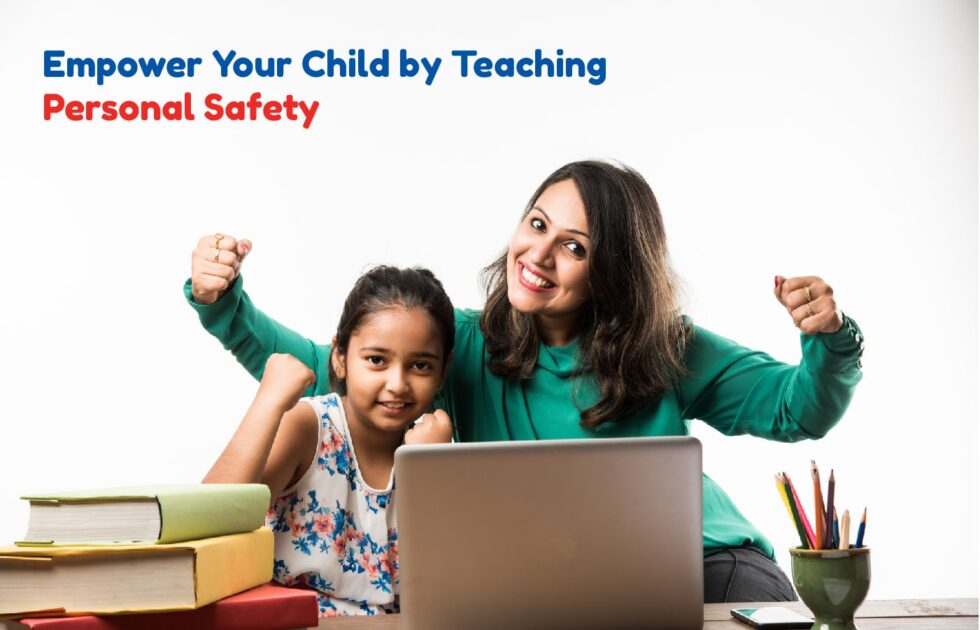Empower Your Child by Teaching Personal Safety
It’s normal for any parent to be concerned about their child’s safety. There are many occasions when the parent is not physically present with the child, be it in school or co-curricular activities. In the absence of the parent, the child needs to be aware and be prepared to avert danger in the form of bullying or even worse.
Hence children must know how to be safe and even defend themselves.
Self-defense is a valuable skill that protects and even raises confidence in the child. Parents can help build their child’s self-confidence byfacilitating self-defense awareness and training.
The meaning of self-defense is the use of force to protect oneself from an attempted injury by another. However, self-defense in this context is not about striking back or using physical strength for protection. It is about developing assertiveness and a response to the aggressor.
In a broader sense, children must be proactive and try to prevent problems or issues.
Children learn physical and mental skills through self-defense. They develop focus and concentration by practicing through repetition. They build inner strength by not giving up, staying in control and being attentive on task. It is a proven, result-oriented discipline.
Let us discuss a few practical strategies for the safety of your child. These strategies can ward off the aggressors’ behavior.
1. Awareness:
Create awareness in the child to be in the group for safety. Tell your child: Not to go with anyone unless they ask you. Or keep them informed that unless you explicitly inform them that someone else will pick them up from school, they cannot go with others.
2. Talk about uncomfortable situations
Talk about uncomfortable feelings. Talking about situations you know would make your child uncomfortable is vital. You can keep it low-key, but the child should be confident to tell you if they’ve felt strange or uncomfortable. It would help if you had the patience to get the child to describe how that felt.
The kid may struggle to express situations like:
Suppose someone uses inappropriate words to comment on how kids look; they may ask a child for directions or ask the kid to help them look for something, like a lost pet. Being patient while listening may help you better understand the situation.
3. Stranger Danger
Please help them learn and practice safety habits like not taking sweets or chocolates from strangers, not getting into a stranger’s vehicle etc.,
Please be aware of the people who interact with your child on a daily basis. The idea of strangers can be confusing for kids. Unfortunately, anyone can be unsafe. There are instances of a child being abused by people they know and are comfortable with.
When your child is young, make them understand that most people are good, but some people have problems, and it’s your duty as a parent to protect them from harm. Hence talk to your child about “tricky people.”
4. Be accessible
If they ever need to talk to you, let them know that they can come to you to talk about any issue that troubles them. Educating your child by role-playing is key to building awareness.
In other words, you need to know if a neighbour invites your child in for a snack when you’re not around. Or if a relative asks your child for “hugs and kisses”?
5. Give them actionable steps for scary situations.
Explain to your child a few simple, actionable steps they can take when an uncomfortable situation happens:
Step 1: Loudly say, “NO!”
Step 2: Run away. If you have taught your kid not to run from adults, and to be respectful, emphasize how important this is in an uncomfortable situation.
Step 3: Find a trustworthy adult. If your child can’t find you, tell your child to look for a mom with kids.
Conclusion:
Self-defense is not an art; it is a culture that every family should adopt and practice in children’s growing years. It is about being alert and fighting with brains.
Safety conversation should be an ongoing topic at home. Personal safety isn’t something to bring up once with your child. It needs to be a regular, calm discussion.

